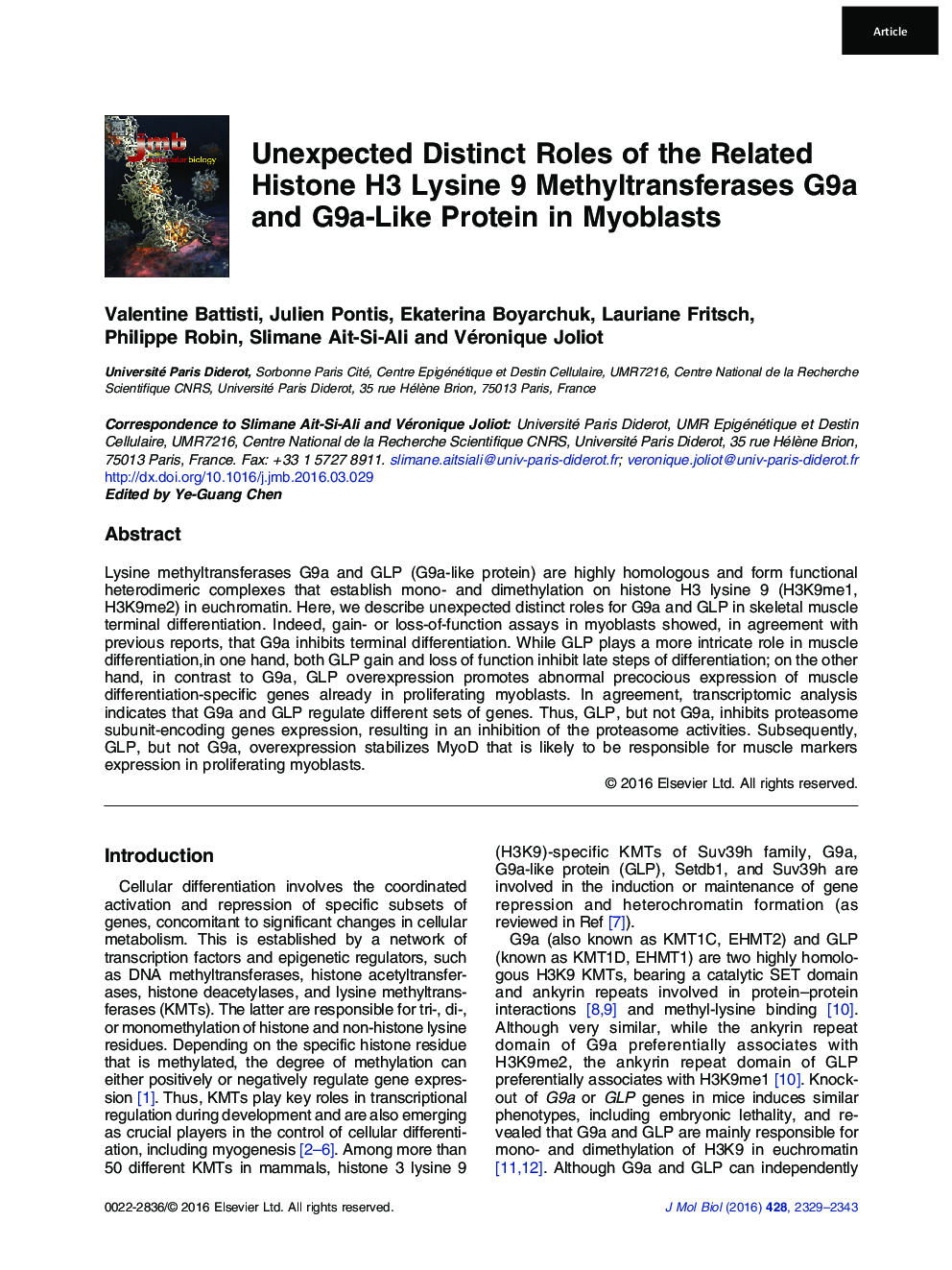| Article ID | Journal | Published Year | Pages | File Type |
|---|---|---|---|---|
| 2184346 | Journal of Molecular Biology | 2016 | 15 Pages |
•G9a and GLP methyltransferases regulate cell proliferation and differentiation.•G9a and GLP differentially regulate skeletal muscle terminal differentiation.•GLP, but not G9a, inhibits proteasome function in proliferating myoblasts.•GLP, but not G9a, activates myogenic genetic program in proliferating myoblasts.•The related H3K9 KMTs G9a and GLP play distinct roles in proliferating myoblasts.
Lysine methyltransferases G9a and GLP (G9a-like protein) are highly homologous and form functional heterodimeric complexes that establish mono- and dimethylation on histone H3 lysine 9 (H3K9me1, H3K9me2) in euchromatin. Here, we describe unexpected distinct roles for G9a and GLP in skeletal muscle terminal differentiation. Indeed, gain- or loss-of-function assays in myoblasts showed, in agreement with previous reports, that G9a inhibits terminal differentiation. While GLP plays a more intricate role in muscle differentiation,in one hand, both GLP gain and loss of function inhibit late steps of differentiation; on the other hand, in contrast to G9a, GLP overexpression promotes abnormal precocious expression of muscle differentiation-specific genes already in proliferating myoblasts. In agreement, transcriptomic analysis indicates that G9a and GLP regulate different sets of genes. Thus, GLP, but not G9a, inhibits proteasome subunit-encoding genes expression, resulting in an inhibition of the proteasome activities. Subsequently, GLP, but not G9a, overexpression stabilizes MyoD that is likely to be responsible for muscle markers expression in proliferating myoblasts.
Graphical AbstractFigure optionsDownload full-size imageDownload high-quality image (122 K)Download as PowerPoint slide
